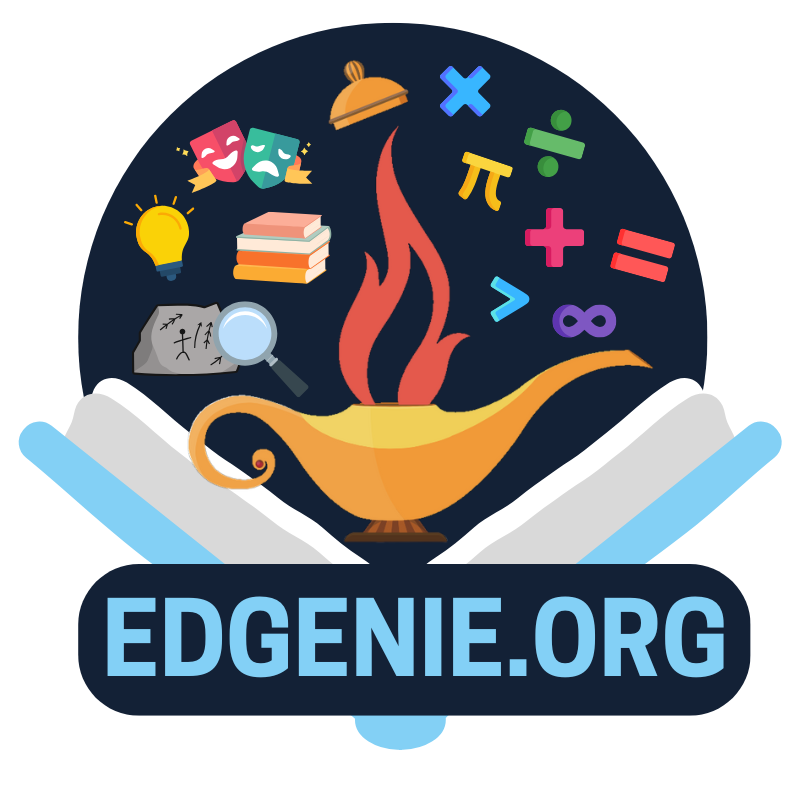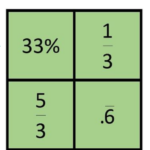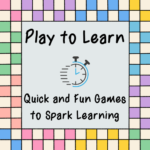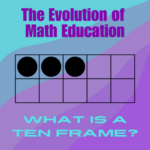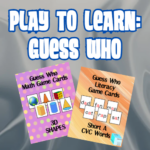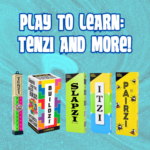Which One Doesn’t Belong? A Math Activity for Every Learner
Which One Doesn’t Belong? (WODB) is a simple activity with big benefits. Whether you’re teaching kindergarteners or high schoolers, WODB creates opportunities for every student to engage, think critically, and share their ideas. With no single “correct” answer, this activity encourages creativity and conversation, making it a go-to for classrooms everywhere. What is WODB? wodb.ca At its core, WODB presents four objects—numbers, shapes, or images—and asks students to decide: Which one doesn’t belong? The twist? Every object could “not belong,” depending on the reasoning. For example, a set of numbers might include 4, 9, 12, and 16. One student might…
Unlocking the Power of Words: How Vocabulary Trees Can Transform Learning in Grades 4-12
Struggling to engage her 7th graders with the language of social studies, Mrs. Ramirez tried something new: Vocabulary Trees. By breaking down intimidating terms like “democracy” and “oligarchy” into their roots, prefixes, and suffixes, her students began to unlock meaning—and confidence. Suddenly, words became tools, not obstacles. Debates came alive with precise language, essays reflected deeper understanding, and test scores soared. “It’s like they finally see the connections,” Mrs. Ramirez marveled. Vocabulary trees didn’t just boost comprehension—they transformed her students into critical thinkers ready to tackle complex texts. Want your students to thrive? Plant the seeds with Vocabulary Trees! 🌳
Play to Learn: Quick and Fun Games to Spark Learning
International Games Month is the perfect time to celebrate how games can transform learning into an engaging and meaningful experience. Whether you’re looking for a quick classroom activity or a fun family game night, these short, educational games deliver big on fun and skill-building. I recently brought these games to the Association of Mathematics Teachers of New York State Annual Conference, where they were placed around the room during the opening night cocktail hour. They were a HIT! Here’s a roundup of some fantastic options: 1. Tsuro In this beautiful tile-laying game, players guide their markers along paths, aiming…
The Case for AI in Schools
Curious about how AI is reshaping our classrooms—and why every school needs clear rules to keep it in check? A recent lawsuit in Massachusetts shows just how high the stakes can be. When a student was penalized for using AI in a project, the lack of clear guidelines led to unexpected consequences. Discover why bringing AI “into the light” with a transparent Code of Conduct can protect students, support teachers, and prevent confusion down the line. Ready to dive in? Find out what every educator needs to know.
The Evolution of Mathematics: What is a Ten Frame?
Continuing our series on The Evolution of Mathematics, let’s dive deeper into understanding why the math we’ve always done—and the algorithms behind it—work the way they do. In our initial post, we explored the idea that while math itself hasn’t changed, our approach to teaching it has shifted to emphasize understanding why algorithms work, rather than just how to perform them. In this post, we’ll focus on some effective strategies teachers are using to help students grasp these concepts on a deeper, more conceptual level. Let’s start by exploring the foundational tool of the ten frame. What is a ten…
Making Magic in the Secondary School Library with Monthly Missions
Tired of seeing bored students during study hall? Looking for fresh ways to get them excited about visiting the library? In this post, I’ll share creative monthly challenges that I’ve used to transform my school library into a hub of activity and imagination. From turning a ghost into a famous book character in October to building epic summer reading stacks in June, these simple yet impactful ideas will inspire students to engage, create, and explore—all while keeping your library lively and fun. Curious? Dive in to discover how you can bring these exciting activities to your own library!
Flip, Flash, and Flourish: Flippity’s Formula for Fun-Filled Learning
Flippity has long been a favorite tool for educators looking to bring more interactivity and engagement into the classroom. With its latest updates, including multimedia flashcards, a vintage video game quiz, and a customizable board game creator, Flippity continues to offer flexible, fun ways to elevate learning. What makes Flippity truly stand out is its ease of use—no coding required. Teachers can simply copy and paste their content into pre-made Google Spreadsheet templates, allowing for quick and simple customization. From embedding YouTube videos and audio into flashcards to turning content into competitive quizzes, Flippity’s tools help chunk information into digestible,…
Embracing the Fidget: Fidget Deals for the New School Year!
It is great to be back to the blog, after our end of summer break! I hope you all had a wonderful rest of your summer and were able to recharge before the beginning of the school year. The beginning of the school year is all about setting expectations within the school building and classrooms or teaching areas. In my last post, I explored how incorporating fidgets into professional development sessions can help educators better understand the potential of fidgets in the classroom. I also shared some favorite fidgets, offering practical options to enhance focus and engagement for both students…
Play to Learn: Guess Who
Guess Who– one of the games we all grew up playing and that we probably have in our game closets, if we have kids. The classic game is a fun way to practice deduction, observation, and strategic questioning skills. Just a quick review of the simple rules of the game Each player randomly selects one character from a separate pile of cards. The goal is to guess the opponent’s chosen character by asking yes-or-no questions about their character’s features. Players take turns asking yes or no questions. Players eliminate characters on their board who don’t match the given features. The…
Play to Learn: Tenzi and More!
Today in the Play to Learn series, we are deep diving into the TENZI family of games! We will begin with the original TENZI game, that began this collection of games. TENZI is an exciting and quick-paced dice game that promotes fast reactions and is very easy to learn. To play TENZI, you roll your 10 dice as quickly as possible. The game comes with instructions for eight additional variations, including SPLITZI, MEGA TENZI, and TENZI TOWER. Playing TENZI helps children develop rapid and confident number recognition while being highly enjoyable and straightforward to play. It’s ideal for early finishers…
